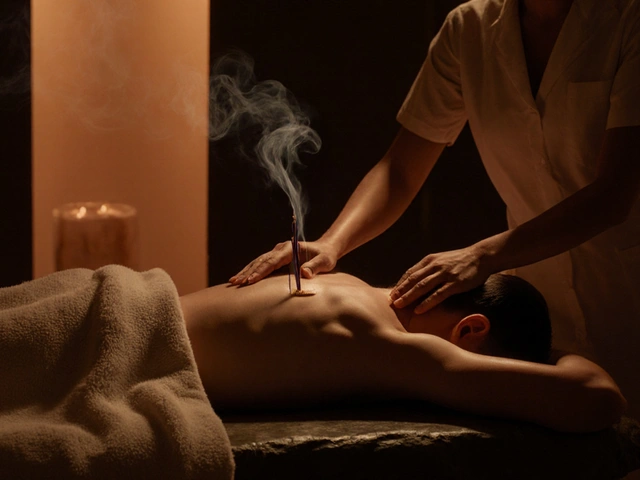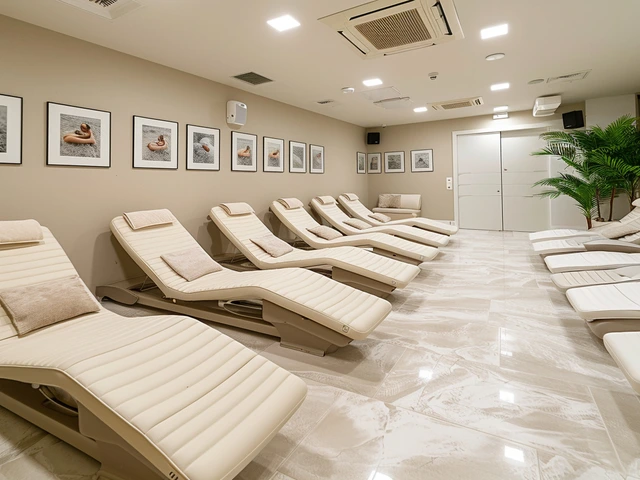Tantric Massage and Performance Anxiety: How to Reduce It
Nov 10 2025
When talking about Tantric Massage Stigma, the collection of cultural myths and misunderstandings that surround tantric massage practices. Also known as tantric taboo, it often blocks people from exploring the real benefits of sensual bodywork. Tantric Massage, a holistic practice that blends sensual touch, breathwork and energy flow is frequently lumped together with negative stereotypes, making it hard for newcomers to separate fact from fiction. This stigma also seeps into relationship dynamics, where sexual incompatibility, differences in desire, timing or emotional connection between partners can be blamed on “the weirdness” of tantric techniques rather than the underlying communication gaps. Understanding the real anatomy of the stigma helps you see how emotional release, the process of letting pent‑up feelings surface through breath and touch and chakra balancing, the alignment of subtle energy centers in the body actually support intimacy, not undermine it.
The first semantic triple is simple: tantric massage stigma discourages many couples from trying tantric massage. Media portrayals often link the practice to exoticism or immoral behavior, which creates a feedback loop of fear. In reality, tantric massage is a structured system that relies on consent, clear boundaries, and skilled breathwork. The second triple states that tantric massage requires breathwork and chakra balancing. When a practitioner guides a client through coordinated breathing, energy flows more freely, and the chakras—especially the sacral and heart centers—open up. This is why emotional release becomes a natural by‑product. The third triple links emotional release to improved relational health: when partners experience a safe space to let emotions surface, they often report reduced sexual incompatibility and higher trust levels. So the stigma masks a set of tools that actually mend the very issues it’s blamed for.
Another key connection is that chakra balancing influences sexual energy. The sacral chakra governs desire, pleasure, and creative flow. When it’s blocked, people may feel disconnected from their own bodies, which can translate into friction with a partner. A well‑guided tantric session realigns this center, making sexual energy more fluid. Because the stigma paints chakra work as “new‑age fluff,” many miss out on a practical method for boosting intimacy. The fourth triple shows that proper education around tantric massage reduces stigma. When beginners learn the anatomy of the practice—how breath, touch, and intention interact—they replace fear with curiosity. This opens the door to exploring techniques that address sexual incompatibility without judgment.
Finally, we can’t ignore the social angle. The stigma flourishes in environments where open dialogue about sensual health is rare. In cities like Prague, where you’ll find guides on “Sensual Massage in Prague” and “Lingam Massage,” the local culture is more accepting, and the stigma is weaker. That contrast demonstrates the fifth triple: cultural context shapes the intensity of tantric massage stigma. Where openness exists, people report higher satisfaction and fewer misconceptions. By recognizing these patterns, you can decide whether you want to challenge the stigma in your own circle or simply seek out a community that already embraces these practices.
Below you’ll find a curated list of articles that dive deeper into each of these angles. From step‑by‑step guides on preparing for emotional release, to case studies on couples healing sexual incompatibility, the collection gives you practical tools to see past the myths and experience the real benefits of tantric massage.
Learn what tantric massage really is, why it’s stigmatized in the Czech community, and practical steps to reduce that stigma for clients and therapists.

Nov 10 2025

Apr 21 2025

Jun 16 2025

Nov 18 2023

May 1 2024